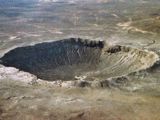The ruins of Murakashi mine trail up the verdant Tochigi mountainside like a Studio Ghibli dreamscape, scattered about with the rusted-stiff robot arms of cranes that guard its approach like frozen heroes in Medusa’s cave. Zoom out and the blaring red canopy roofs of this rustic industrial graveyard begin to look like the shiny spilled guts of a snake, slithering languidly out of the mountain’s clean-cut grey-granite belly. Guardian arms. Murakashi mine drilled limestone and dolomite out of the Japanese mountainside topsoil for 50 years, closing down some 30 years ago. Now it’s a relic of a bygone age, when …
Ruin of the White Root Mine
The White Root mine is old, so old that only the faintest outlines of its bones remain. Squint hard and you might see fragments of its ribcage scattered over the hillside, parts of a cracked skull just visible through the topsoil. Once it must have been huge, swathing up and down the valley and pumping out smoke, now there’s just a single slurry run and a few walls left. I went there ages ago, on the same road trip that took me to the Gunma Ski Lift, Hume Cement Factory, and back to the Asama Volcano Museum. Some kind of …
Ruin of a Japanese WWII Shipyard
The Kawaminami shipyard was opened in 1936 and went bankrupt in 1955. It had four huge bays and two large factory buildings. Through the war years it served as both a munitions factory, a drydock for construction of cargo ships, escort ships, and kaitens, and possibly also as a Prisoner of War (POW) slave labor camp. By some accounts up to 4000 POWs were forced to work here during wartime. The main factory hall. History on the place has been hard to come by definitively. According to official POW internment records, it never had POWs. According to other sites it …
Chutes and Ladders in a Haikyo Factory
 It was the third time for me to set out in search of the Hume factory. The first time was on our inaugural haikyo road trip- we hit up Kappa Pia and the Volcano Museum by day and searched for the Hume factory by night.
It was the third time for me to set out in search of the Hume factory. The first time was on our inaugural haikyo road trip- we hit up Kappa Pia and the Volcano Museum by day and searched for the Hume factory by night.
7 Massive Holes in the Earth

The Earth’s face is a pock-marked, scarified thing, riddled with enormous holes dug by human hands or caused by the caprices of nature. Deep ‘blue hole’ lagoons accrete within coral reefs, volcanoes tear the earth apart leaving enormous smoking craters…
Remnants of Kamaishi Iron Mine
 Kamaishi Mine is ranked as the second best haikyo (ruin) in all of east Japan, according to one of the haikyo books I follow. Iron has been mined there since 1727, and Japan’s first blast furnace was built there in 1857.
Kamaishi Mine is ranked as the second best haikyo (ruin) in all of east Japan, according to one of the haikyo books I follow. Iron has been mined there since 1727, and Japan’s first blast furnace was built there in 1857.
The mist-wreathed ruin of Matsuo mine
Matsuo mine in the north of Japan opened in 1914 and closed in 1969. In its heyday it was the biggest mine for sulfur in the Eastern world. It had a workforce of 4,000 and a wider population of 15,000, all of whom were accommodated in a make-shift city in the mountains of Hachimantai park. The city was known as the ‘paradise above the clouds’ for its comparatively luxurious apartment blocks and near-constant ebb and flow of mist. That same mist nearly prevented us from finding the place at all.
- Page 1 of 2
- 1
- 2



